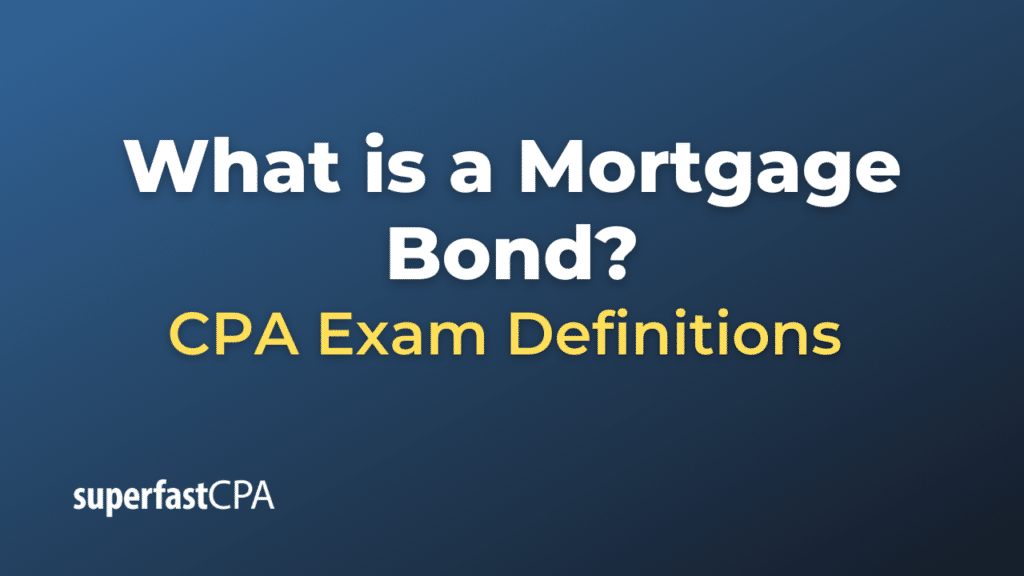Mortgage Bond
A mortgage bond is a type of bond that is backed by a pool of mortgages or mortgage-backed securities. Companies or financial institutions issue these bonds to investors, and they pay the investors regular interest payments over the life of the bond. The bond is secured by a mortgage or pool of mortgages that generates income, which is used to pay back the bondholders.
When a person takes out a mortgage to buy a house, a bank or other lending institution provides the funds for the purchase in return for a promise from the borrower to repay the amount over a certain period with interest. These mortgages can then be bundled together and sold to a company that issues bonds based on the value of the mortgages.
Investors who buy the bonds receive regular interest payments generated from the mortgage payments. The mortgage bond is considered a secured debt obligation because if the borrowers were to default on their mortgage payments, the bondholders have a claim to the underlying property.
The safety of a mortgage bond largely depends on the quality of the underlying mortgages. If the mortgages are high-risk (for example, if they have been issued to borrowers with poor credit histories), the bond is riskier. This was one of the key issues in the 2007-2008 financial crisis, where the collapse in the value of mortgage bonds (particularly those backed by subprime mortgages) led to significant financial turmoil.
Example of a Mortgage Bond
Suppose a bank has issued mortgages to 1,000 homeowners. Each homeowner is making regular payments on their mortgage to the bank. These payments include both repayment of the principal (the original amount borrowed) and interest.
Now, the bank decides to free up some of its capital to be able to lend more money. To do this, it decides to bundle together these 1,000 mortgages and sell them as a security, which we will call a mortgage bond.
An investment company decides to buy this mortgage bond. They pay the bank a large sum upfront, and in return, they get the right to the income generated by the 1,000 mortgages. This means that the mortgage payments made by the homeowners now go to the investment company instead of the bank.
The investment company then decides to split up the mortgage bond into smaller pieces and sell them to individual investors. Each investor buys a small part of the bond and, in return, they receive a portion of the income generated by the mortgage payments. This income takes the form of regular interest payments over the life of the bond.
If a significant number of homeowners start defaulting on their mortgages, it could impact the ability of the investment company to make interest payments to the bondholders. In this case, the value of the bond would decrease. However, the bondholders would still have a claim to the underlying properties, which could be sold off to recoup some of their investment.
This example provides a simplified version of what a mortgage bond is and how it works in practice. In the real world, the process involves more complexity, especially with the involvement of multiple financial institutions, diverse mortgage types, and varying levels of risk.













